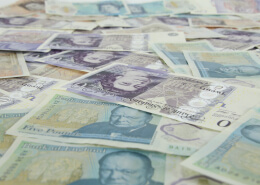Everything You Need to Know About The Oil Price Collapse
The collapse in oil prices in 2020 has caused chaos amongst the world’s major currencies. Oil markets crashed following Organisation of the Petroleum Exporting Countries (OPEC) failing to strike a deal with Russia, triggering a price war with Saudi Arabia. This coupled with the lack of demand amid the coronavirus outbreak caused a major collapse, with oil prices reaching their lowest levels since 2016. Here we outline the facts and discuss the implications that the collapse in oil prices will have on currency markets.

Why did oil prices fall?
In 2016, Russia and OPEC agreed to limit the output of oil after low prices overreached and began causing issues across other countries. The 3-year agreement came to an end last year with Russia refusing to agree to further cuts requested by OPEC. The proposal was due to a lack of oil demand as a result of the coronavirus outbreak. OPEC proposed to reduce oil production by 1.5million barrels per day in a bid to stabilise the market.
Although Russia has approved price cuts in the past, this time around they were unwilling to limit output. Oil is Russia’s biggest revenue-making export which explains why they were so cautious to accept the agreement. Saudi Aramco, the world’s largest oil company owned by Saudi Arabia, responded by slashing its export oil prices in a bid to saturate the market. This has now triggered a price war with Russia and contributed to the collapse of oil prices.
How much did oil prices fall?
Oil markets crashed to more than 30%, with the international benchmark dropping from USD 45 a barrel to USD 31.02 a barrel. This is one of the biggest one-day oil price drops in history. Oil prices have reached their lowest levels since 2016 and made their biggest loss since 1991. The collapse is likely to continue to cause significant political and economic consequences across currency markets.

What does the collapse of oil prices mean?
The oil market is plummeting deeper into chaos on the prospect of a free-for-all supply. With oil demand increasingly on the decline due to the financial impact of coronavirus, traders predict that oil prices will only continue to decrease. Surprisingly, Russia has declared that it will ramp up production over the coming months. Although Russia requires the money from exporting oil, continuing to increase oil production could be a potentially expensive gamble as they may sell more oil but at a much lower price.
Many have commented that the situation is reminiscent of 2014 when OPEC declared war on US oil producers, who continued production despite dwindling prices. Saudi Arabia and Russia’s failure to reach a unified decision that has fortified oil prices since 2016 also indicates a collapse in future co-operation between the two counties. Saudi Aramco allegedly plans to increase output to above 10 million barrels per day next month and possibly even a record-breaking 12 million a day going forward.

Oil prices on currency
Needless to say, that the collapse in oil prices had a chaotic effect on the world’s major currencies. Here is a breakdown of how the situation has affected currency markets:
British Pound (GBP)
The British pound (GBP) came under significant pressure in 2020 as a result of both coronavirus and Brexit woes. However, due to the UK’s swift response to coronavirus vaccinations, the British pound (GBP) became one of the world’s strongest currencies during the start of 2021. However, with other countries catching up with the UK’s vaccination efforts, the pound Sterling (GBP) has struggled to dominate its currency peers over recent weeks. That being said, the UK economy is forecast to see a strong recovery during Q2 with the reopening of non-essential businesses.
Canadian Dollar (CAD)
Whilst the UK is on track to see an imminent sharp recovery, Canada’s economy has been forecast to grow at a slow pace during Q2. The Bank of Canada (BoC) previously cut interest rates by 50 basis points in its first-rate cut in years, with oil prices continuing to slump. Oil is one of Canada’s most profitable commodities and recovered for a short time on hopes for oil production cuts to stimulate demand. However, a production cut deal could not be reached due to a lack of support from Russia. This situation ultimately led to another plunge. The collapse in oil prices will continue to cause concern for Canada as coronavirus fears create a bleak outlook.
Euro (EUR)
The euro (EUR) had performed well amid the oil price crash seeing gains during the start of the new trading week against the US dollar (USD). During times like these where the US suffers from major economic issues like the oil price collapse, the US dollar creates a buoyancy effect on the euro, carrying it towards a strengthened position.
What does the future look like for oil collapse?
If we look at the progressions of similar past events such as the oil price collapse in 2014, this crisis left a lasting impact on the Russian economy. The drop-in oil prices led to severe pressures on the Russian Rouble (RUB) and it became increasingly difficult for the currency to maintain its worth.
Over the years, Saudi Arabia has remained relatively safe during periods where they have cut oil prices. As the country owns the world’s largest oil reserves, it can withstand low oil prices for some time without experiencing any significant threat to its economy. Only time will tell if this is a situation of history repeating itself.
Pick your currency, check the rate
✓ Award-winning service ✓ Secure bank transfer ✓ Peace of mind












